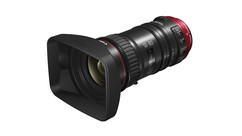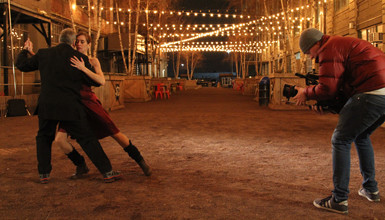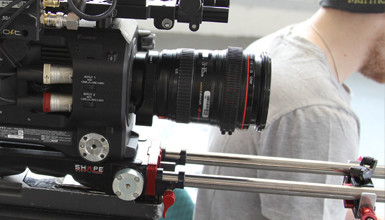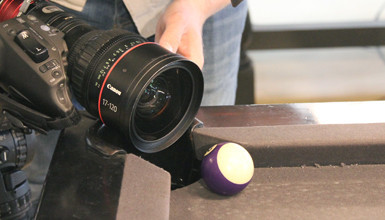Canon Compact-Servo 18-80mm
| Zoom Factor | MSRP Price | Weight | Lens Mount | T* | Focus Rotation | Iris Blades | Front Diameter | Minimum Focus |
| 4.4x | $5,225 | 2.65 lbs | Canon EF | T4.4 (f4) | No hard stops (109º effective from min to ∞) |
9 | 84mm (77mm threaded) | 1.7' |
BUILD AND FUNCTIONALITY
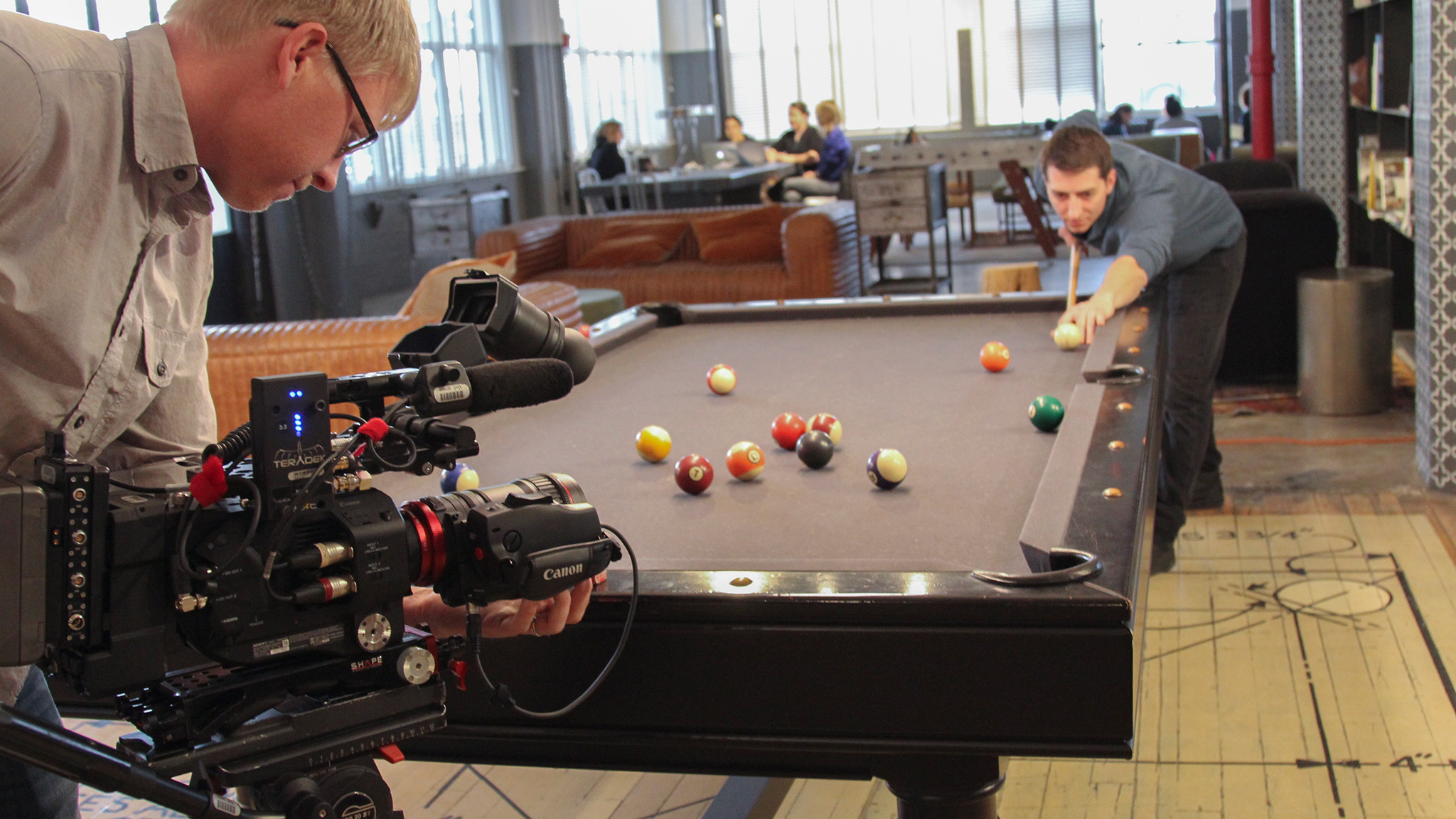
The Canon 18-80mm is a great lens that offers a wide range of features. While giving you some of the features desired in a cinema lens, like smooth iris control, geared focus, zoom and iris rings, and parfocal focusing, the lens also incorporates all of the great features in a stills zoom, like auto-focus, auto-iris, image stabilization, and the ability to control focus and iris from the camera (depending on the camera of course). The lens itself is an all-metal construction available in only Canon EF mount. Power and lens data are transferred through the lens mount. The lens also comes with a removeable servo unit that gives even more functionality. Let’s break all this down.
The focus ring is geared in the standard 0.8 pitch, interfacing with industry-standard follow focus and wireless motors. The ring also has a rubber grip just before the gear ring, making it easy to find and manipulate. The biggest disappointment, in my opinion, is that the focus ring has no hard stops. I feel this restricts the lens from functioning solely as a cinema lens, making repeatable focus moves challenging. The effective focus rotation from minimum focus to infinite is 109°. To compare, the Canon 24-105 has an effective rotation of only 75°. While this isn’t necessarily a selling point, you still have more fine-tuned control than other lenses without hard stops. The focus indicators have been moved to the operator side of the lens, instead of on top, so it makes them easier to read.
The zoom ring is also geared, but in the proprietary Canon pitch 0.5, instead of the standard 0.8. Again, the zoom indicators are on the operator side of the lens.
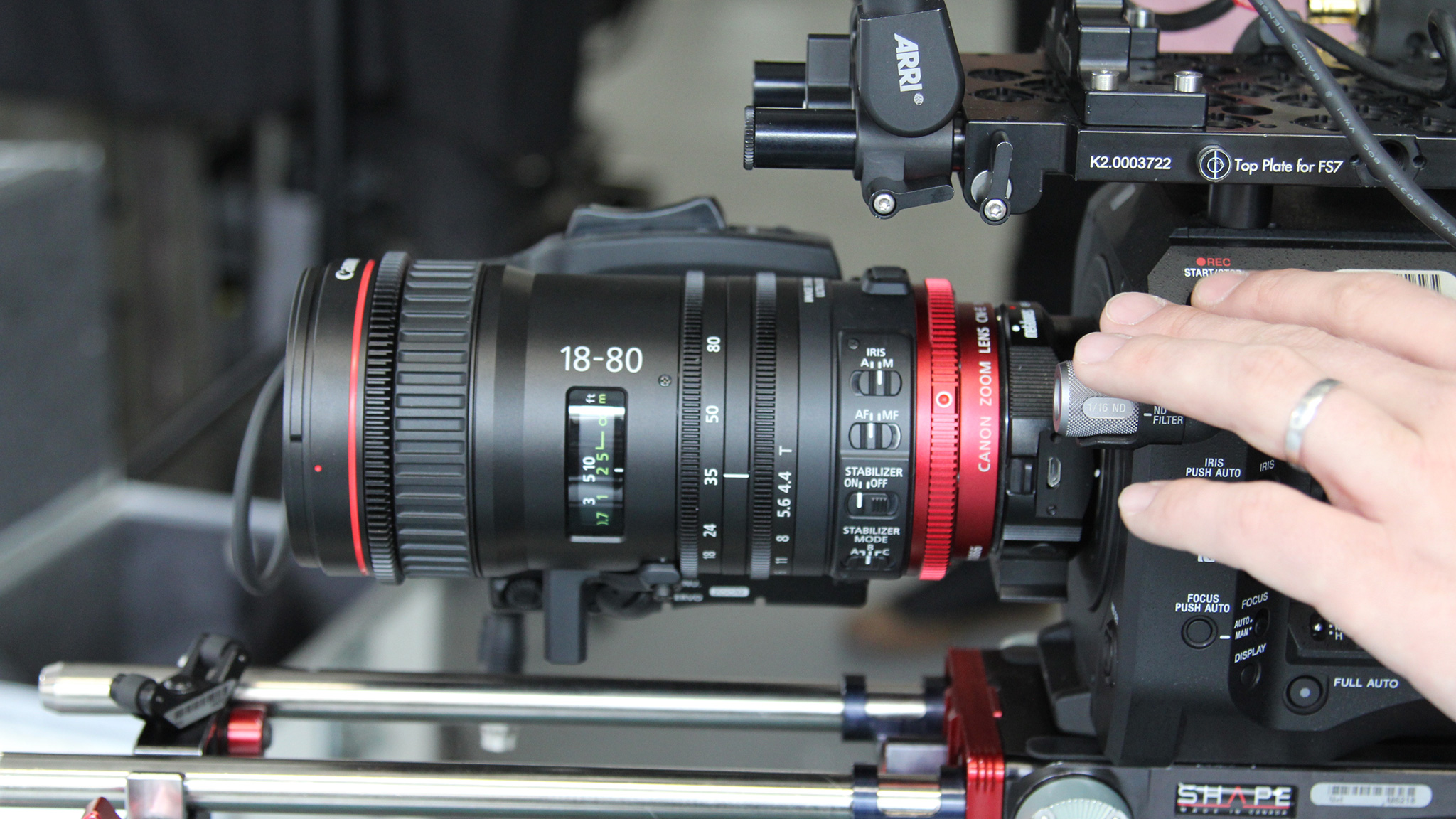
The iris is a fixed T4.4 (f4) aperture. This is great for consistency and matching across other lenses, but it is also unfortunately slow. While I prefer shooting verite at an f4, it limits your options when shooting in low light. This feature, I feel, requires you to have an additional lens in your kit for those darker scenes. The iris ring is also geared in the Canon 0.5 pitch. The ring is fully de-clicked, allowing for smooth iris adjustments in shot, which is incredibly useful. The iris can also completely close, making black balancing simple without the need for the lens cap.
The lens has switches to engage Auto/Manual Iris, Auto/Manual Focus and Image Stabilizer. The image stabilizer has an upgrade from the EF zooms, with 3 degrees of stabilization.
A) is used for basic handheld.
B) is a more exaggerated stabilization, for use when shooting at the end of the lens, or in very shaky situations like on a car mount, shooting from a moving vehicle, etc.
C) is for use on a tripod, that stabilizes the shot while removing the float that standardly occurs when coming to a stop on a tripod head.
These three options give you lots of flexibility in how effective the image stabilizer can be.
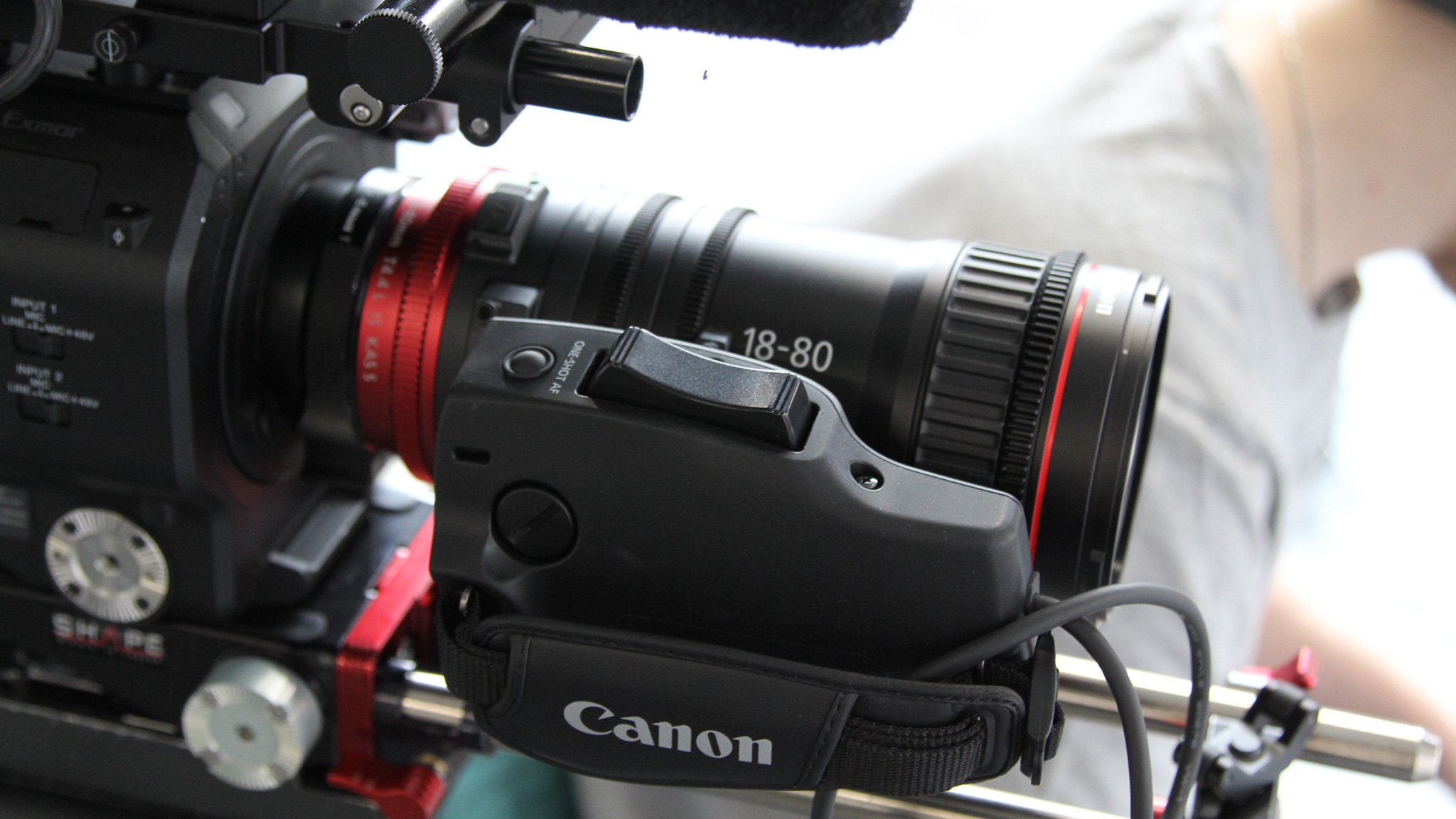
The servo unit is an interesting design. The servo itself is hard-mounted to the lens, housing the motors. The power is supplied by the lens mount, so there’s no need for additional cables. There is a small zoom toggle built in the unit, making it easy to have steady zooms, while keeping the lens low-profile. On the bottom of the unit is a remote port for connecting Canon Zoom or Focus Demands for external control. There is a toggle to switch between manual and servo control, as well as a dial for adjusting the zoom speed. Then there is the servo grip. The servo grip gives you start/stop, One-Shot AF and a larger zoom toggle, as well as serving as a handgrip for the lens / camera. This attaches to the lens via an Arri rosette and plugs into the remote port on the servo unit itself. This is actually a nice feature, allowing you to re-position the grip anywhere on the camera or tripod to make for better balancing and placement of the handgrip. The attached cable is just long enough to place the grip on the tripod handle for easy seated control of the camera. The servo grip itself is made of plastic and is very light. The only issue I’ve found with the servo grip is the position of the remote port on the lens itself. When the cable is plugged in, it makes it difficult to attach the lens to the camera when it's mounted on a tripod or on a rig with rods. It also reduces the ability to slide the camera backwards on the tripod or shoulder rig for proper balancing. Fortunately, Zacuto's Right Angle cable provides a solution, and as an added bonus, the extra cable length means you can relocate the handgrip to other mounting locations.
Hidden under a rubber cap is a small screw for adjusting the back focus on the lens. This is helpful, especially when moving the lens from a fixed EF mount to an adapter like a Metabones. This way, you can be confident you always have correct focusing and proper parfocal ability.
The lens comes with a removable shade, has a front filter thread of 77mm, and the external diameter of the lens is 84mm when using a clip-on mattebox.
GEOMETRY
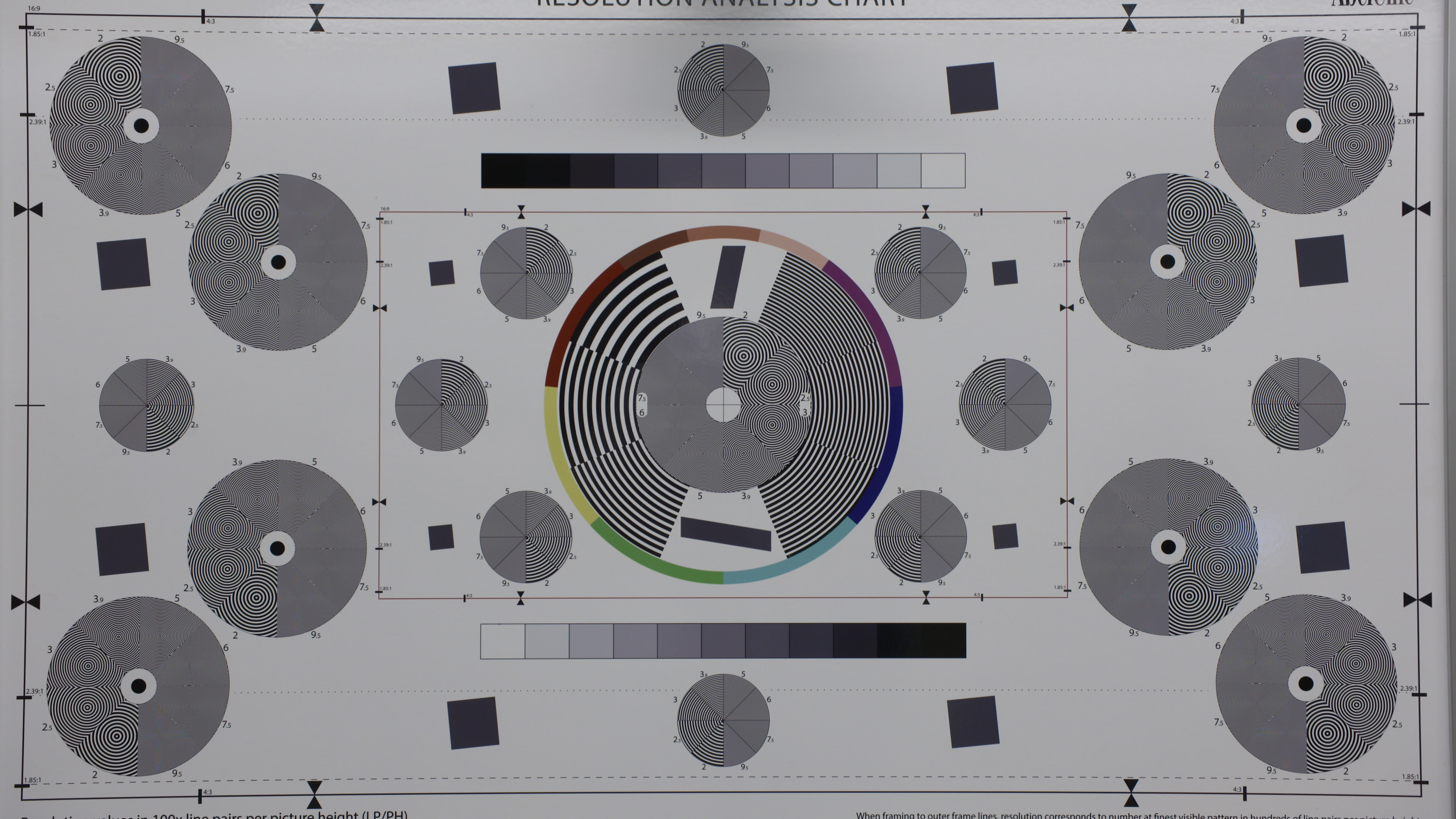
We shot the Canon 18-80 against a resolution chart to see if there is any distortion on the geometry of the image. At 35mm, there is a slight amount of pincushioning, more so on the horizontal than on the vertical. You can also see how the lens renders vertical and horizontal lines at 18mm in the interview frame. You can definitely see some distortion of the image at the wide end, with the windows bowing outwards and the vertical columns showing some bending.
EDGE BRIGHTNESS
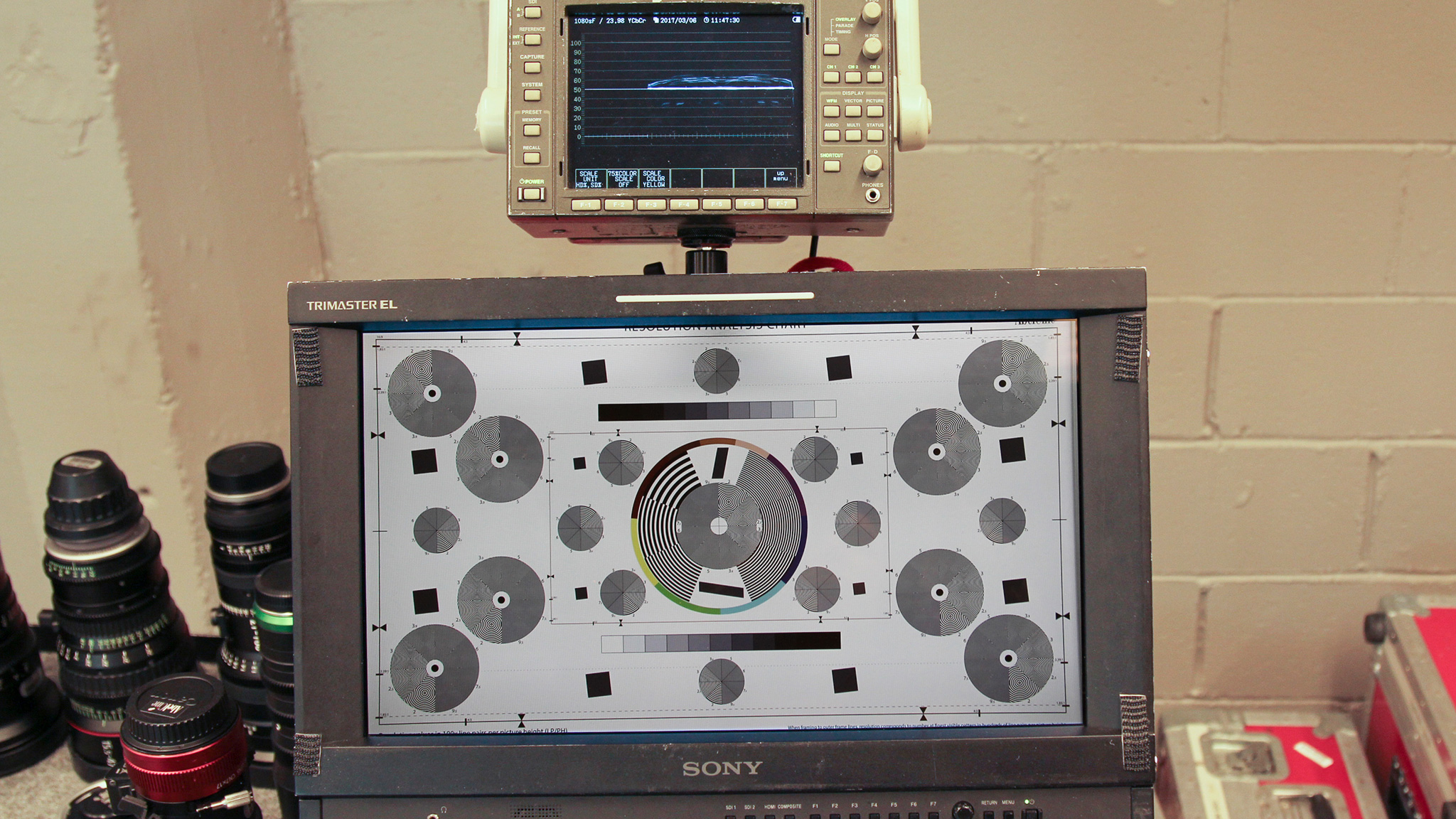
To test the edge brightness of each lens, we filmed the resolution chart at all T-stops from wide open (T4.4) to T11 and examined the curve of the white on a waveform monitor. With this lens, there is some noticeable falloff at T4.4, but then clears up entirely from T5.6 and above. Download full resolution screen captures of all T-stops here.
SHARPNESS
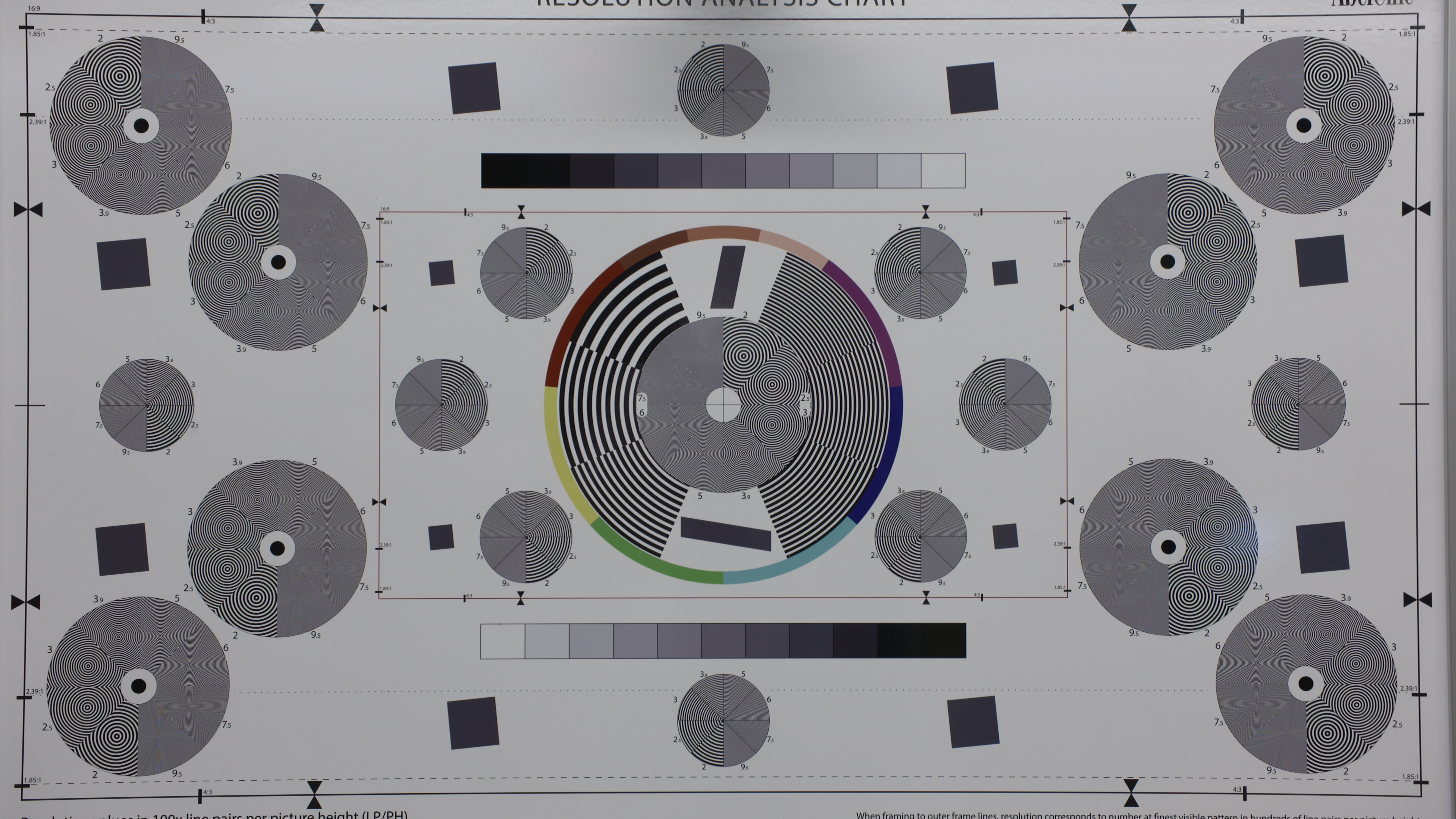
Again, we shot the Canon 18-80 on the resolution chart to test its sharpness. I was incredibly surprised by how sharp this lens is! It holds its sharpness across all T-stops, and is comparable to the more expensive Canon Compact Zooms. This lens is incredible in the sharpness department. Download full resolution screen captures of all T-stops here.
CHROMATIC ABERRATION
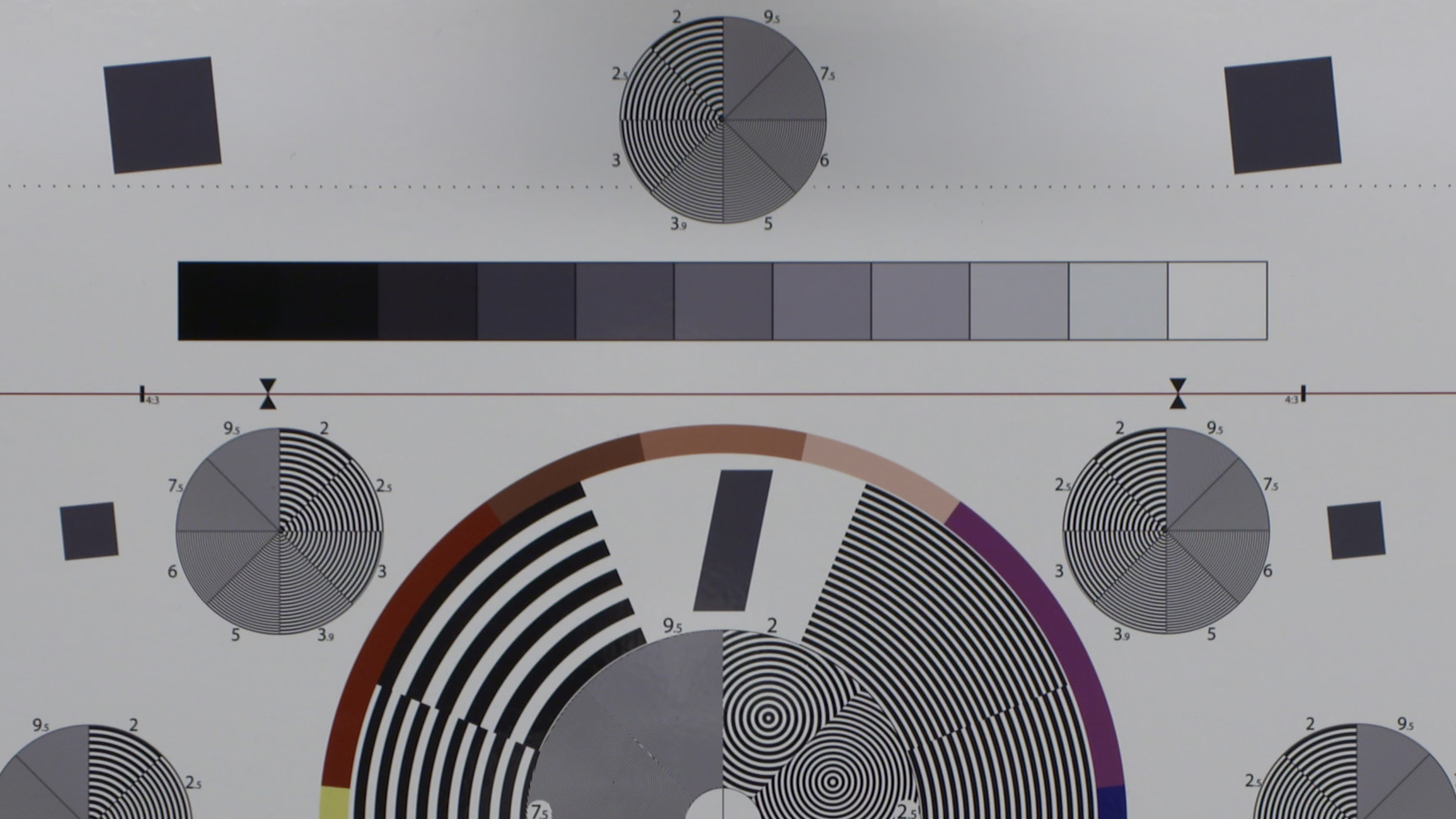
If we look at the off-kilter boxes on the resolution chart, we can look for chromatic aberration, or color fringing. There is some noticeable red fringing on the sides of the boxes and only the slightest amount of blue fringing on top.
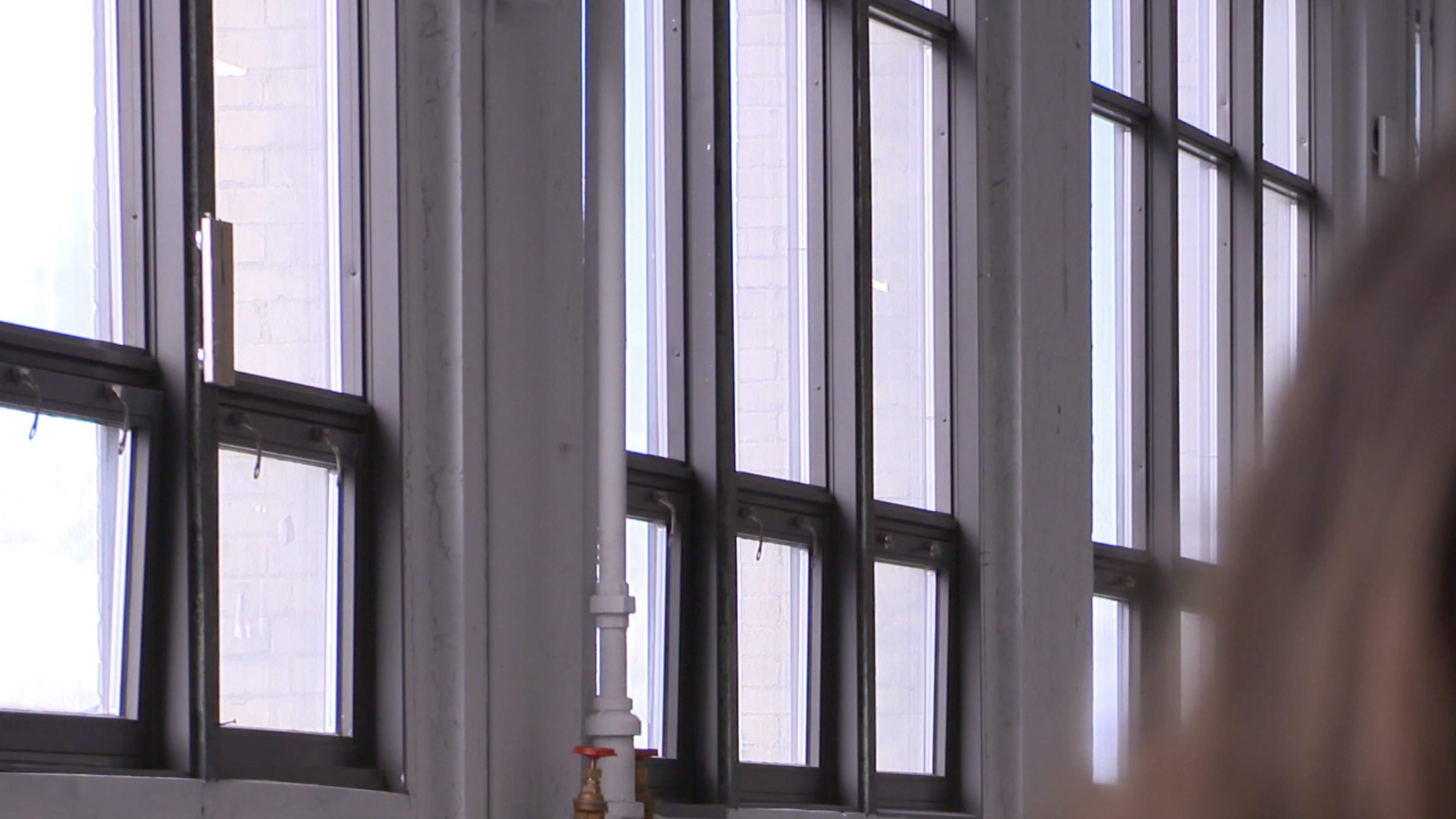
Interview frame at 300%
If we check this against the interview frame, enlarged 300% at the windows, all of this technical fringing goes away. Yes, if you scour the frame, you will still find examples of fringing, but it is so negligible that it blends into the natural color of the light and architecture. This is very impressive for a lens in this price range.
COLOR
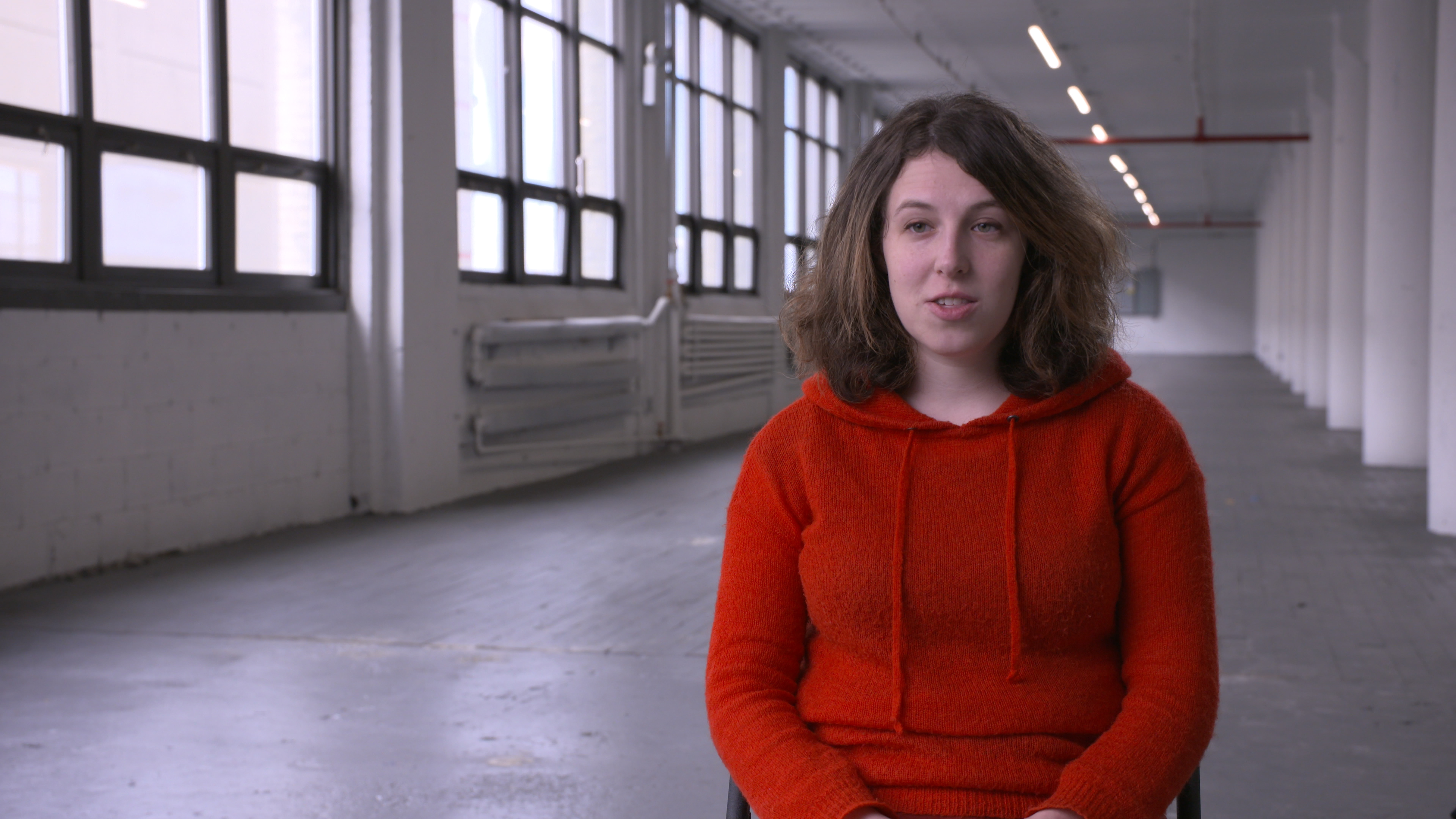
To test the color of the lens, I first white balanced the camera without a lens attached. This read the ambient light hitting the sensor to give us a clean, pure white. From there, I mounted the lens and filmed a white card. When reading the RGB waveform and vectorscope, you can see the color properties of the lens. The Canon 18-80 is fairly neutral overall, while adding the slightest warmth to the skin tones. I found that this lens has an almost identical color profile to the Canon Compact Zooms 15.5-47 and 30-105.
In the interview frame, you can see that the lens has nice, solid contrast as well. This lens is a near-perfect match to the look of the Canon Compact Zooms.
BREATHING
We tested the lenses for breathing in two different setups. The first is in the interview frame at both 35mm and 50mm. There is very minimal breathing with this lens at 35mm, and almost none at 50mm.
The second test was at the pool table, at the wide and tight ends of the lens. Again, you can see the breathing at the wide end of the lens, as well as in the tight frame. While the breathing is there, I find it less distracting when placed in a scene with objects in motion.
MINIMUM FOCUS
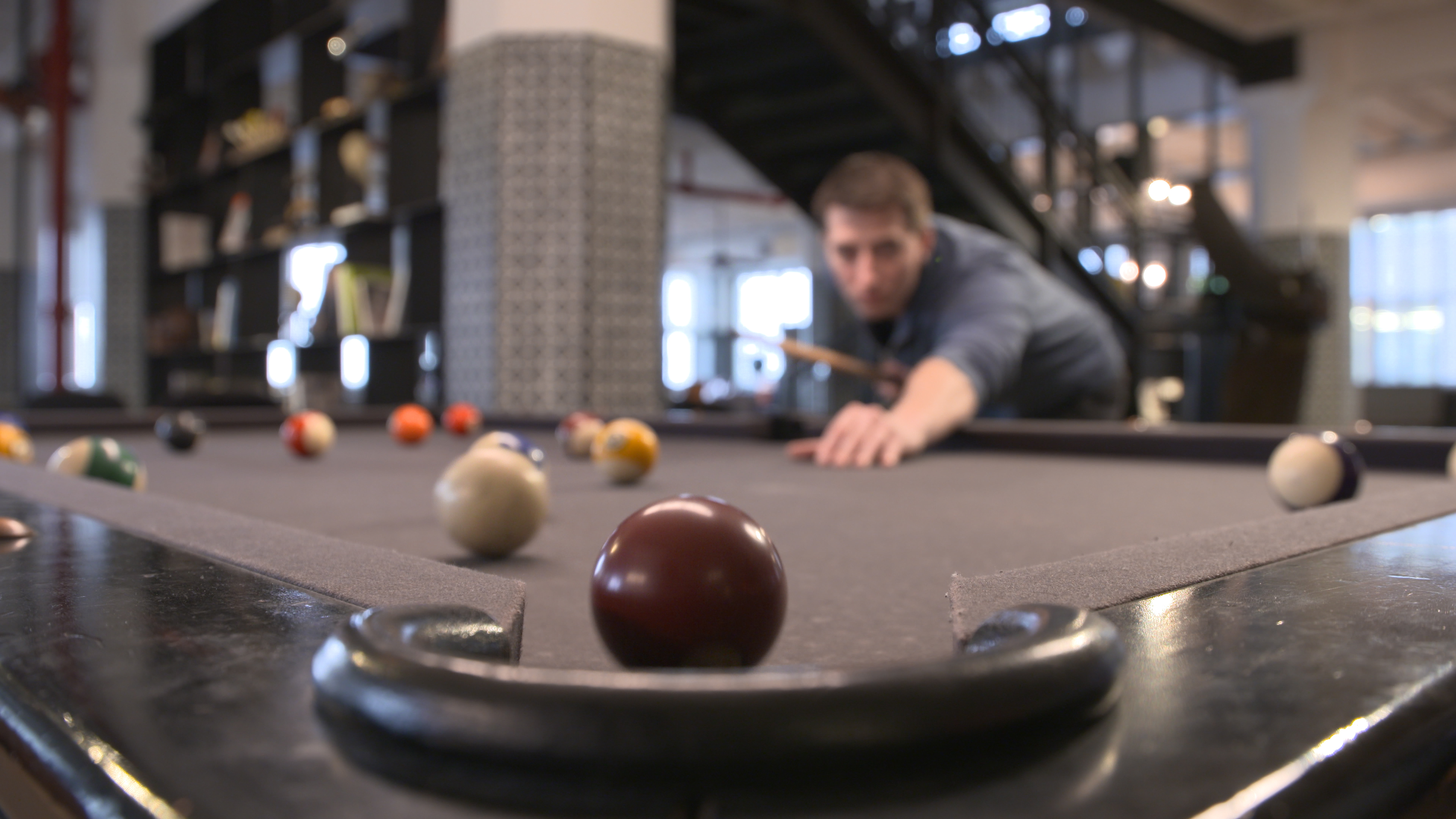
The minimum focus of the Canon 18-80 is 1.7’, or roughly 20”. The lens itself is only 7” long, so this places the minimum focus distance 1’ from the front element. At 18mm, this gives you a really nice look, and at 80mm, it gets you really close to the action.
BOKEH

Looking at the night exterior scene, we can judge how the lens renders out of focus elements, like the overhead cafe lights. The bulbs are pretty round, but not entirely smooth. This has to do with the combination of only being T4.4, as well as having 9 iris blades instead of the 11 that are in many of the other lenses in the test. With that said, the lens yields better looking bokeh than I would have expected. There is some distortion to the look at the very edges of frame, cutting off the outer edge of the bulb. But this occurs much further to the edge than a lot of other lenses in the test.
LENS FLARES
Overall, the Canon 18-80 is incredibly flare resistant. At the wide end of the lens, there is a pleasing star pattern around the light itself with a tight blue-white halo. The flare trail is pretty short, with only a few green elements in its path. While being incredibly flare resistant, the flare that does exist isn’t ugly, like we’ve seen on other highly resistant lenses. At the tight end, the flare enters pretty late by throwing in some colorful purple light leaks, but then returns to looking the same as the wide flare, with staring around the light and minimal green elements in the trail.
You can see how the flares appear in scene at both the wide end of the lens and the tight end of the lens in these images. They are pleasing when they appear, but for the most part they fight to stay away.
CONCLUSION
The Canon Compact-Servo 18-80mm “hybrid” zoom lens is a great, inexpensive lens that will be a happy upgrade from your DSLR zooms. The zoom range is very acceptable for most standard verite coverage, but is a little short for interviews. The build is solid, yet light at only 2.65 pounds. The smooth iris ring gives you a lot more flexibility in exposure. The lack of hard stops on the focus ring is frustrating, as is the slow stop of T4.4, but the hybrid aspects like auto iris, auto focus, and image stabilization make it an attractive lens for the quality of the glass. The servo grip is great, in that it lets you place it anywhere on your camera rig via a rosette, giving you more flexibility in comfort and balance. The lens is incredibly sharp, has beautiful color rendition that matches the more expensive line of Canon glass, is parfocal, has minimal breathing, and a pleasing look to the incredibly flare-resistant coating.
I hope you found this lens test useful, and be sure to check out the other lenses in the Behind the Lens – A Look at Documentary Zooms series.











